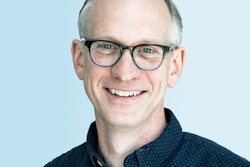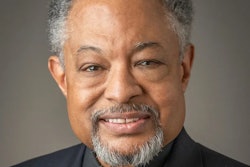Univ. of South Carolina Earns ‘Very High’ Research Designation
COLUMBIA, S.C.
The University of South Carolina continues to raise its academic profile with a $6 million federal grant for HIV prevention, and a designation by a leading education policy center as an institution of “very high research activity.”
The designation by the independent Carnegie Foundation for the Advancement of Teaching puts USC among the nation’s top 95 research universities, public or private. USC was the only South Carolina school to meet that definition.
“In terms of self-confidence and faculty believing we can accomplish great things, it’s a shot in the arm. … It gives us an advantage in recruitment and tells students they can stay in the state and go to a great school,” says Dr. Harris Pastides, USC’s vice president for research and health sciences. “I hope it gives our state citizens a boost, a point of pride.”
The California-based foundation lists the 95 top-tier research schools in alphabetical order without rank. The list includes Ivy League universities such as Harvard and Cornell. Schools on the list in neighboring states include Emory University, the University of Georgia, Duke University and the University of North Carolina-Chapel Hill.
The “very high research” category, as opposed to “high,” was based on factors including the number of faculty involved in research and how much research grant money the school received. The foundation changed its classification names this year.
“That’s why it’s so exciting,” Pastides says. “It was not something we applied for. It’s not a lobbying thing.”
USC was awarded $149.3 million in 2003-2004, the years used for the designation. In 2004-2005, USC’s awards increased to $166.2 million. Pastides says the school needs to “keep performing and producing” to stay in the top tier.
A recent grant should help do that.
The university has received a $6 million grant from the Centers for Disease Control and Prevention to fund the Institute for HIV Prevention Leadership for another three years, says Willie Oglesby, the institute’s director of operations.
The institute, based at USC’s Arnold School of Public Health, attracts people from across the nation who manage or coordinate HIV/AIDS programs.
“This demonstrates USC is a national leader in many important and relevant issues of our time,” Oglesby says. “HIV is a significant cultural and social problem we face not only here but worldwide.”
Even though “AIDS has begun to drift away in the minds of some people,” the epidemic is growing, Pastides says.
The South is hit particularly hard, agrees Lynda Kettinger, director of the HIV/STD division of the state Department of Health and Environmental Control.
Pastides attributes what Kettinger calls the “epidemic of complacency” to AIDS now being considered more of a poor person’s disease. It’s become part of the health disparity among socio-economic classes, he says.
In the South, race and poverty are closely linked.
Blacks and Hispanics account for more than half of new cases nationwide, even though they make up one quarter of the total population, says Dr. Donna Richter, USC’s dean of public health and a leading HIV/AIDS educator. The institute is focused on preventing the disease among minorities.
Since the first class enrolled in 2000, more than 200 people from 33 states, Puerto Rico, the U.S. Virgin Islands and Washington, D.C., have graduated from the nine-month program, Oglesby says. The seventh class is underway now.
The institute pays for participants to travel to Atlanta for four intense, one-week training seminars on the latest approaches to prevent and combat the disease. They have homework assignments in their communities in the interim, he says.
In 2004, South Carolina ranked 10th nationwide in the rate of AIDS cases. Washington, D.C., ranked first. Columbia ranked 11th nationwide in metropolitan areas with a population of at least 500,000. Miami topped that list, according to the latest figures from the CDC. The rankings are based on the number of AIDS cases per every 100,000 people.
— Associated Press
© Copyright 2005 by DiverseEducation.com





















